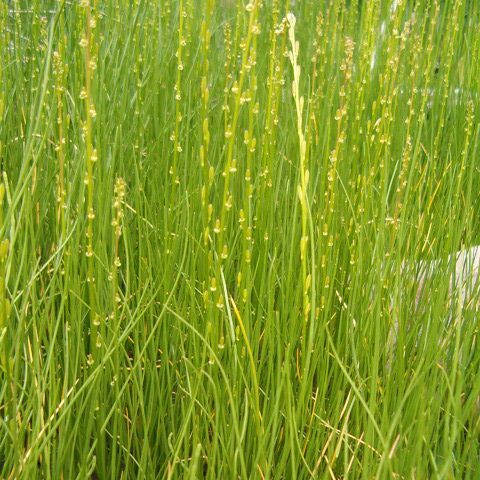Infl. a raceme on long lfless peduncle. Fls bisexual. Tepals nearly equal, concave, deciduous, each with an adnate, almost sessile stamen with broad anther. Carpels 3 or 6, ± adnate to central axis or carpophore from which fertile ones, us. 3, become detached when ripe, sterile carpels falling later, if at all. Fr. follicular but indehiscent, loosely enclosing linear seed. Grassy herbs with fibrous roots. Lvs tufted, obscurely alt., linear, erect; sheath membr., open, terminating above in entire or 2-lobed ligule. About 12 spp. of temperate regions, especially well represented in Australia, the 2 N.Z. spp. widespread.
Herbs, perennial. Roots occasionally with tubers. Rhizomes stout. Leaves erect, terete; sheath with ligule apically entire or 2-lobed. Inflorescences spikelike racemes, scapose; scapes shorter than to longer than leaves. Flowers bisexual, of 1 type, short-pedicellate; tepals 6, in 2 series, distinct, yellow-green, conchiform; stamens 4 or 6; anthers nearly sessile; pistils 6, 3 fertile, 3 sterile or 6 fertile, separating when mature; ovules 1 per locule; styles absent. Fruits schizocarps, globose to linear in fruit; mericarps 3 or 6. x = 6.
Glabrous, annual or perennial herbs. Leaves distichous, radical, entire, linear, with a sheath. Inflorescence terminal, spicate or racemose. Flowers bisexual, acti-nomorphic, small, inconspicuous, mostly green. Perianth segments 6, conchiform. Stamens 6 (or partly reduced), epi-tepalous. Anthers sessile, extrorse, cells 2. Carpels 6, or less by abortion, free or united, or partly free; ovule 1 per cell, basal, erect; style mostly absent. Pericarp dry. Seed exalbuminous, embryo straight.
Fls perfect; perianth of 1 or 2 whorls of 3 tep; anthers broad; ovaries 3 or 6, closely approximate, attached along their inner margin to an erect, elongate axis, each unilocular; stigmas minutely plumose; follicles eventually separating from each other and from the persistent axis; seeds cylindric; scape erect; lvs with an evident sheath and long, narrow blade. 15, cosmop.
Herbs, perennial or annual, of marshes, with short stout stems. Rhizomes densely rooting at nodes. Flowers hermaphroditic, in racemes on leafless scapes. Perianth segments 6. Stamens 6. Carpels 6, all or only 3 fertile, connate; stigmas feathery. Fruit syncarpous.

